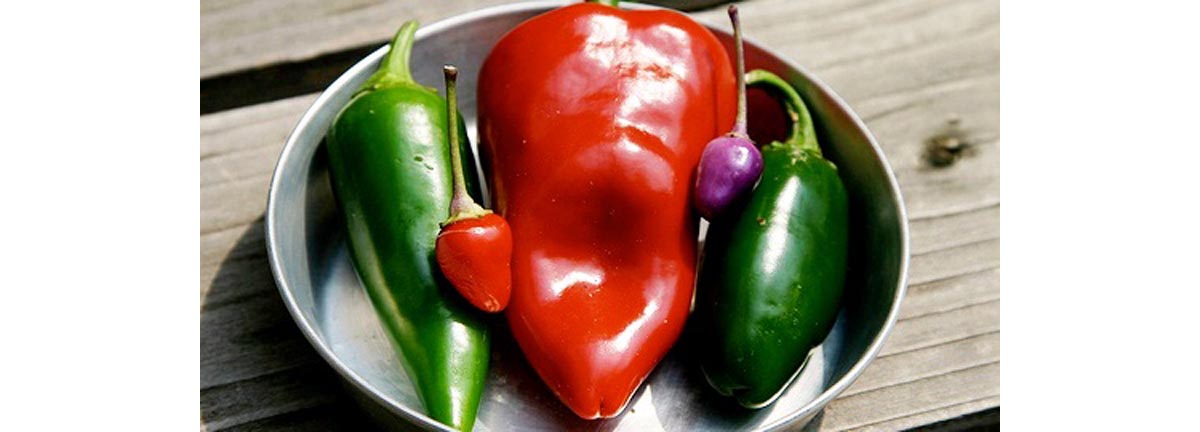Summer time is the perfect season to focus on adding plenty of fresh veggies to your diet. Not only will lots of the best and tastiest vegetables be in season, after all, but hot weather also makes eating foods that naturally have a large liquid content important as you fight the risk of dehydration in increasingly hot summer weather.
What are the best veggies to eat in summer, you wonder?
One of the most important recommendations any dietitian will offer would be to eat plenty of veggies and fruits for a healthy and balanced diet — but why? There are numerous benefits you'll reap if you eat a a diet that is rich in veggies. Some of these include a reduced risk of cardiovascular diseases, digestive problems, and a well-controlled blood pressure. Vegetables and fruits also have a positive effect on blood sugar levels and help in keeping the appetite under control.
Not all vegetables are equally good, though, and it's also important to choose a wide variety to gain the optimum amount of vitamins and minerals.

1. Cucumber
Cucumbers have an unusually high water content and make wonderful additions to any salad, as well as being great raw or even in lemonades. They're a must-have if you live in a hot climate and risk dehydration every day.
2. Tomato
With a water content of up to 95 percent, eating tomatoes is a lot like drinking water — except you gain the benefit of vitamin C, K, potassium, calcium, and lots of antioxidants.
3. Pumpkins
Pumpkins are a great source of vitamin A, which you'll need for a super strong immune system. Do you think of them as a winder food? Think again, as grilled pumpkins are very tasty in salads.
4. Peppers
Peppers, spicy and non-spicy, are rich in capsaicin, which is excellent for a metabolism boost and works wonders for a healthy digestive system.
5. Shallots
Shallots typically belong to the family of garlic, leeks, and onions and are known for their ability to reduce the risk of several types of cancers, specifically liver and colon cancer. Shallots are rich in Vitamin A. They have high concentrations of antioxidants and have anti-inflammatory, anti-allergic, and anti-bacterial properties. Shallots also prevent heart disease and diabetes. They are typically used as dressings in soups, stews, and salads.
6. Broad Beans
Broad beans are rich in fiber, folate, protein, iron, potassium, vitamins A, C, and K, and magnesium. They help in reducing blood pressure, enhancing skin health, and relieving sores. To get the maximum nutrition from beans, it is best advised to steam them gently before eating. Beans are typically eaten with stews, salads, or as a side dish.
7. Mushrooms
Although mushrooms are available in all seasons, they are abundant in the summer. Some of the most nutritious varieties of mushrooms include Porcinis and Chanterelles. Mushrooms are rich in fiber, riboflavin, and potassium, and have a low sodium and fat content, as well as often being really tasty when eaten raw, in salads. Consuming mushrooms helps in improving the body’s immunity. Mushrooms can be kept for several days if stored in a paper bag in a refrigerator. They can be eaten raw or served with salads. They can also be sautéed, broiled, or grilled. While buying mushrooms, select the ones that are dry and firm and check that the gills are intact.
8. Avocados
Avocados are rich in oleic acid, potassium, folate, thiamin, niacin, riboflavin, and magnesium. They are typically added to seasonal salads as they contain a compound that assists in the absorption of healthy carotenoids from vegetables. While buying avocados, pick the ones that have a uniform, unblemished skin.
9. Kohlrabi
Kohlrabi, also known as the cabbage turnip, is an excellent source of potassium and vitamin C. Kohlrabi can be stored in the refrigerator for weeks together. It can be eaten raw in salads. Kohlrabi bulbs can also be steamed or stuffed with vegetable or meat fillings. While selecting Kohlrabi, you should opt for the ones that have small, firm bulbs, and are less than 3 inches in diameter.
10. Egg Plant
Egg plant is a good source of heart healthy nutrients. It is rich in antioxidants such as nasunin, fiber, and potassium. If the egg plant is young, its skin can be consumed. However, as it becomes older, the skin becomes bitter and therefore must be removed before consuming. Egg plants taste best when cooked thoroughly. They taste great when grilled and seasoned with basil, oregano, olives, tomatoes, lemon juice, and peppers. While selecting egg plants go in for the ones that have a smooth taut skin and pick the ones that appear heavy for their size.
- “Beneficial effects of Solanum melongena (Solanaceae) peduncles extracts, in periodontal diseases”, by Diab R, et al. Published in the June, 2011 issue of the Journal of Medicinal Plants Research, accessed on July 5, 2012.
- “Tomatoes, Tomato-Based Products, Lycopene, and Cancer: Review of the Epidemiologic Literature”, by Edward Giovannucci. Published in the February, 1999 issue of the Journal of the National Cancer Institute, accessed on July 5, 2012.
- Photo courtesy of kimtimnashville on Flickr: www.flickr.com/photos/kimtimnashville/2811823139
- Photo courtesy of karenandbrademerson on Flickr: www.flickr.com/photos/karenandbrademerson/4927704196
- www.academicjournals.org/jmpr/PDF/pdf2011/4June/Diab%20et%20al.pdf
- www.jnci.oxfordjournals.org/content/91/4/317.full.pdf+html

